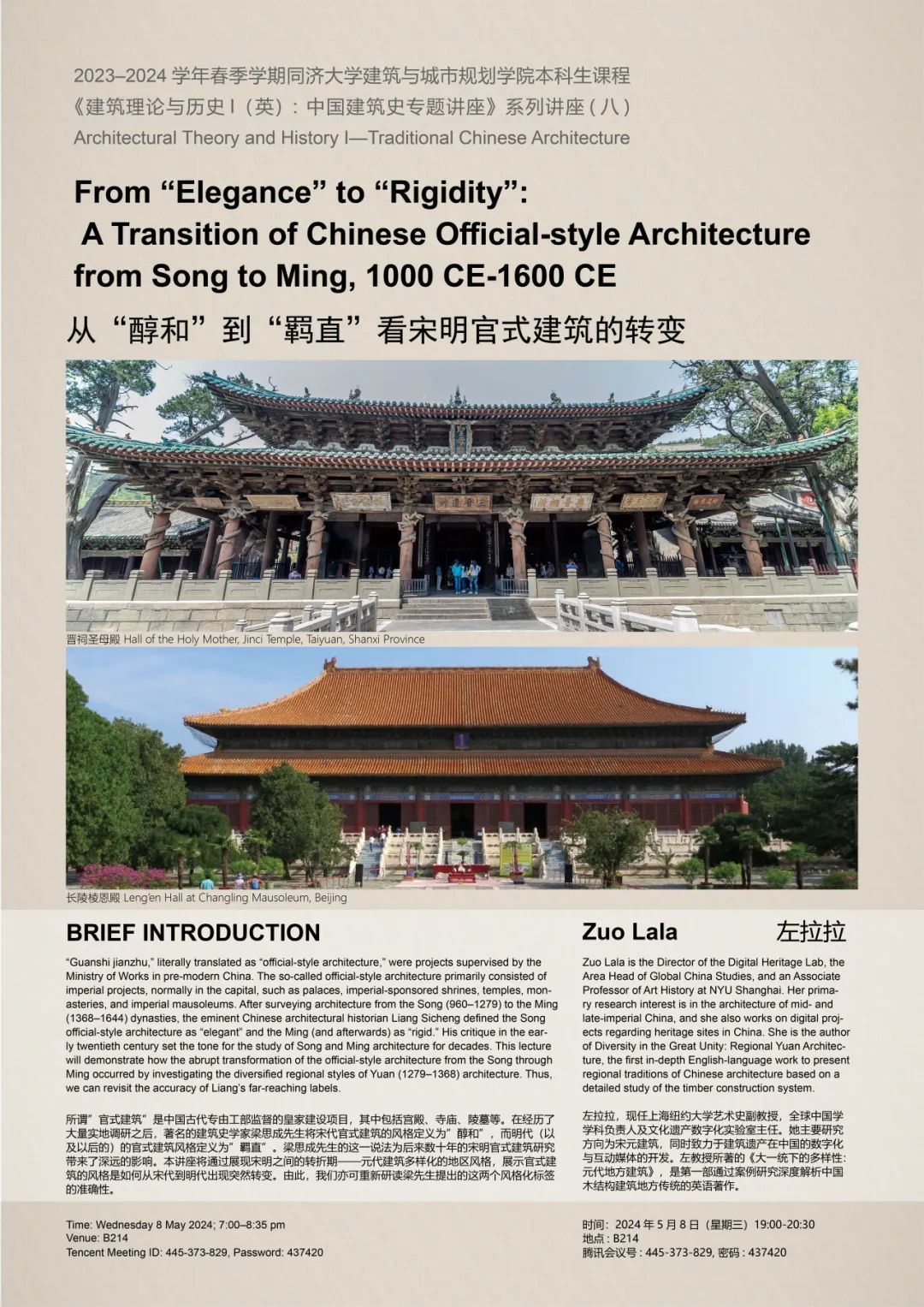

Lecture Series:Architectural Theory and History I—Traditional Chinese Architecture
From “Elegance” to “Rigidity”:
A Transition of Chinese Official-style Architecture from Song to Ming, 1000 CE-1600 CE
Time: Wednesday 8 May 2024; 7:00–8:35 pm
Venue:B214
Tencent Meeting ID: 445-373-829
Password: 437420
Speaker: Zuo Lala
Zuo Lala is the Director of the Digital Heritage Lab, the Area Head of Global China Studies, and an Associate Professor of Art History at NYU Shanghai. Her primary research interest is in the architecture of mid- and late-imperial China, and she also works on digital projects regarding heritage sites in China. She is the author of Diversity in the Great Unity: Regional Yuan Architecture, the first in-depth English-language work to present regional traditions of Chinese architecture based on a detailed study of the timber construction system.
Brief Introduction:
Guanshi jianzhu, literally translated as official-style architecture, were projects supervised by the Ministry of Works in pre-modern China. The so-called official-style architecture primarily consisted of imperial projects, normally in the capital, such as palaces, imperial-sponsored shrines, temples, monasteries, and imperial mausoleums. After surveying architecture from the Song (960–1279) to the Ming (1368–1644) dynasties, the eminent Chinese architectural historian Liang Sicheng defined the Song official-style architecture as elegant and the Ming (and afterwards) as rigid. His critique in the early twentieth century set the tone for the study of Song and Ming architecture for decades. This lecture will demonstrate how the abrupt transformation of the official-style architecture from the Song through Ming occurred by investigating the diversified regional styles of Yuan (1279–1368) architecture. Thus, we can revisit the accuracy of Liang’s far-reaching labels.
 ABOUT US
ABOUT US




